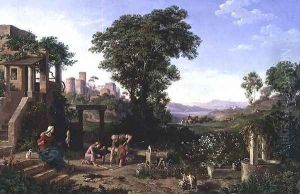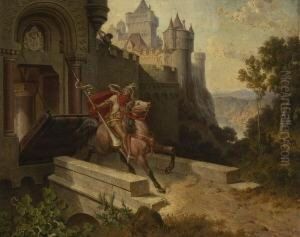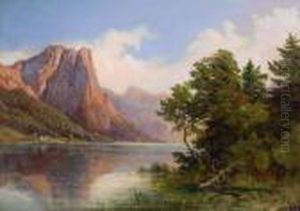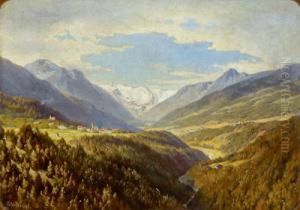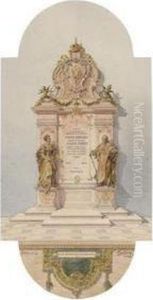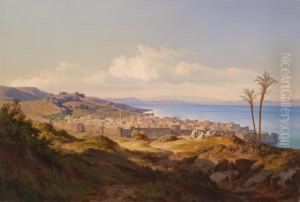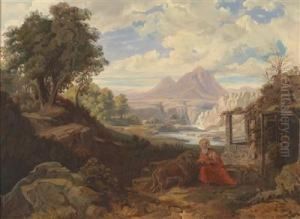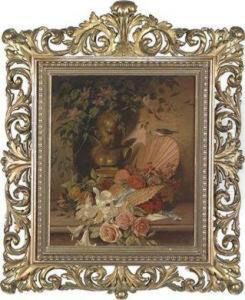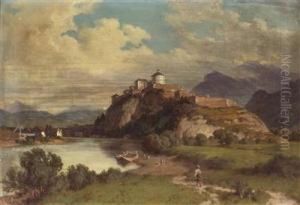Edmund Worndle von Adelsfried Paintings
Edmund Worndle von Adelsfried was an Austrian painter known for his landscapes, genre scenes, and historical paintings. Born on June 13, 1865, in Innsbruck, Austria, Worndle came from a family that had been ennobled, which is denoted by the 'von' in his name. He developed an interest in art at an early age and pursued his passion by studying at the Munich Academy of Fine Arts. He was notably influenced by the techniques and styles of the 19th-century Munich school, which was characterized by detailed realism and a certain romanticizing of subjects.
Throughout his career, Worndle von Adelsfried exhibited a penchant for alpine landscapes, a reflection of his Tyrolean roots. His paintings often featured the majestic peaks and serene valleys of the Alps, capturing the beauty and harshness of the mountainous terrain. In addition to landscapes, Worndle also painted historical scenes, which were popular during his time. These works often depicted moments from Austrian history, imbued with a sense of national pride and romanticism.
Despite living through two world wars, Worndle maintained his focus on the traditional subjects that had always inspired him, rather than delving into the avant-garde movements that were revolutionizing the art world during the early 20th century. His conservative style resonated with those who preferred the familiar and the representational over the abstract and the modern.
Edmund Worndle von Adelsfried's commitment to his craft earned him a respectable position among Austrian artists of his time. However, he did not achieve the same level of international fame as some of his contemporaries. He continued to paint until his later years, remaining true to his artistic vision. Worndle died on December 17, 1944, in Innsbruck, leaving behind a body of work that continues to be appreciated for its technical skill and its celebration of Austrian landscapes and history. Although not a household name, his paintings are a testament to the enduring appeal of traditional landscape art and provide a window into the aesthetics and cultural sentiments of his era.
